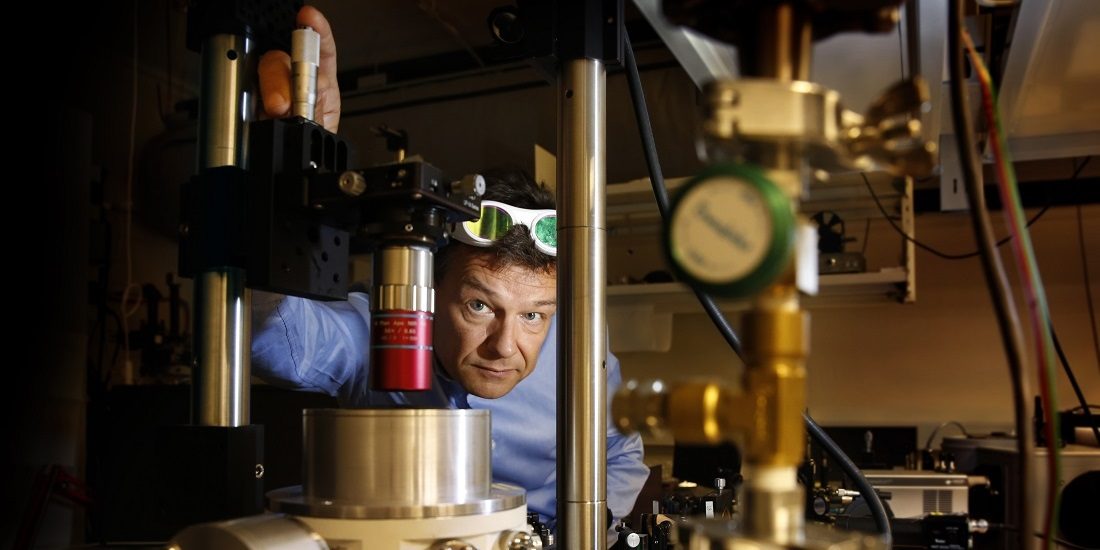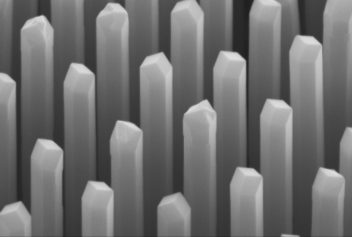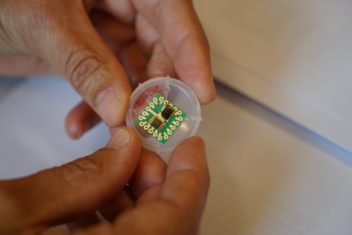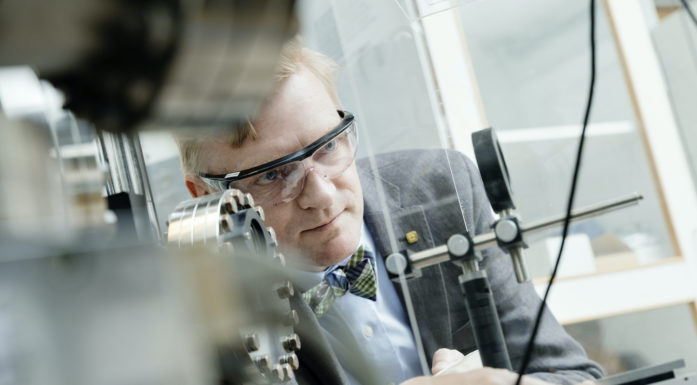Norway pioneers new UV LEDs
Norwegian entrepreneurs want to replace expensive and polluting mercury lamps. Now they have the financing to do it.
UV LED: An NTNU spinoff company called CrayoNano AS is establishing a pilot production facility in Trondheim to develop a new type of light-emitting diodes for ultraviolet light.
Light-emitting diodes for ultraviolet light, or UV LEDs, emit light that is invisible to the human eye.
Visible-light LEDs are very energy efficient compared to old-fashioned incandescent lights and can be used in numerous applications.
Scientific breakthrough
CrayoNano has its origins in research from Professors Helge Weman and Bjørn-Ove Fimland and their groups at NTNU’s Department of Electronic Systems.
CrayoNano has developed a completely new method for manufacturing semiconductor devices. NTNU’s scientific breakthrough is the ability to grow ordered semiconductor nanostructures directly on atomically thin graphene.
“We’re the first in the world to have developed and patented a method of producing semiconductor nanostructures on graphene. We’re the first to use semiconductor nanowires instead of thin film materials. This is the beginning of a whole new era,” says Helge Weman, NTNU professor and entrepreneur at CrayoNano AS.
Raised NOK 50 million
CrayoNano is now fully underwritten to the tune of NOK 50 million.
“This is a great day for the company and for Trondheim, which can now start a production line for UV LEDs as the only one of its kind in Europe,” says Morten Frøseth, CEO of CrayoNano AS.
“This means that we have a sufficient capital base to invest in our own production line and to strengthen the team. This will enable us to develop and demonstrate more efficient UV LEDs than are on the market today,” says Frøseth.
- You may also like: Nano-knowledge can lead to super solar cells
From solar cells to flexible LED displays
It wasn’t a given in 2012 that the start-up company would focus its energies on a new type of UV LED.
“We started by looking at solar cells where the competition is relatively stiff. It was only after three years that we realized that we should focus on UV LEDs,” says Professor Weman.
The company’s technology has potential applications in many products – from solar cells and high-resolution displays (micro-LEDs) for smart watches, and VR and AR (augmented reality). It may also enable the development of flexible LED displays.
Out with mercury lamps
Deep ultraviolet light (UV light) at a wavelength of roughly 280 nm kills bacteria and viruses. Today it is used to purify water and air, to monitor the environment, in the food processing industry and in the health sector. Mercury lamps are often used in Norwegian wastewater treatment plants.
“Mercury lamps should be phased out. They harm the environment, are big and bulky and have a short life span,” says Weman, who hopes that mercury technology will disappear.
The UN Minamata Convention on mercury commits signatory countries to prohibit the manufacture, import and export of mercury by 2020.
Ten times more efficient

State-of-the-art equipment will “enable us to demonstrate and scale up the technology to industrial production levels. If we succeed with the technology, this will be a billion dollar industry,” says Professor Helge Weman. Photo: Terje Heiestad, Norforsk
The main problem with current UV LED technology is its low efficiency in the short UV wavelengths needed for disinfection. However, CrayoNano’s technology is especially suitable for short UV wavelengths.
“We can make UVC LEDs that are ten times more efficient and up to ten times more cheaply,” than what is on the market now, Weman said. Many people have attempted to replace today’s mercury lamps, he said. The problem is that this can’t be done with the technology currently available.
“Mercury lamps are a product with no good alternative yet. Clean water and clean air are extremely important and that motivates me to succeed technologically,” says Weman.
- You might also like: After big oil comes the age of tiny things
First prototype ready
CrayoNano produced its first prototype six months ago.
“For the last two years, we’ve rented equipment in other countries to grow these prototypes, first in Germany, and then in the United States. We’re also collaborating with China,” says Weman.
“Now we have to show that we can make a prototype that is stable and efficient enough,” he adds.
Billion dollar industry
CrayoNano has now ordered a state-of-the-art LED production system from the world’s leading supplier of such equipment. The machines used to grow the wires – called MOCVD equipment – are used by LED manufacturers in Asia.
The goal is to use the same technology to grow nanowires for UV LEDs directly on graphene.
This state-of-the-art equipment will “enable us to demonstrate and scale up the technology to industrial production levels. If we succeed with the technology, this will be a billion-dollar industry,” says Weman.
Asked how soon this can happen, Weman replies, “If we manage to do it in three years, that will be very fast.”







